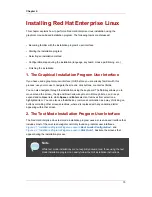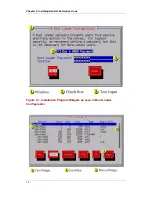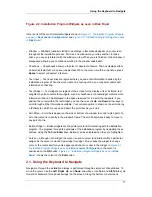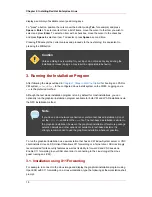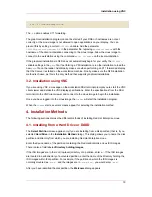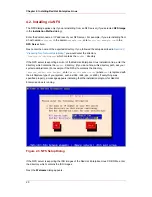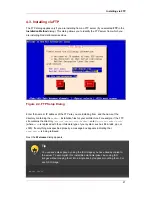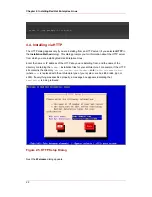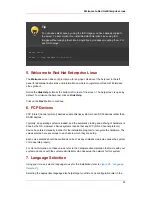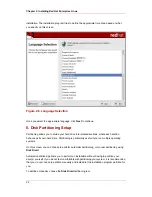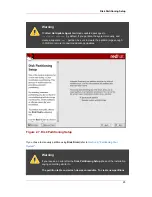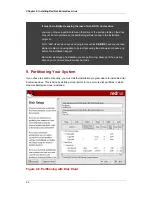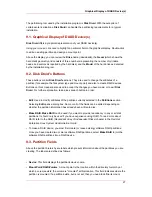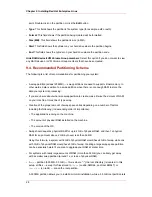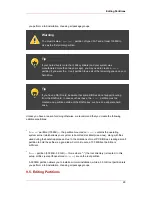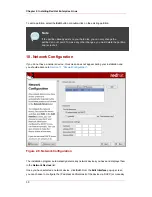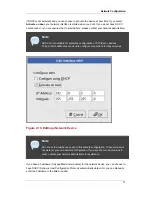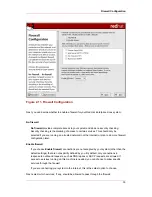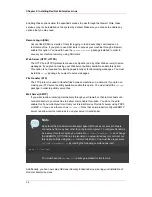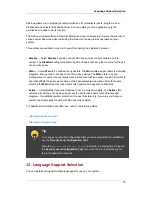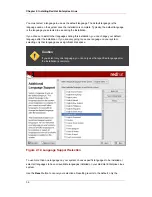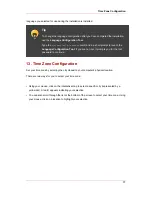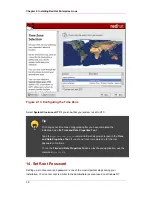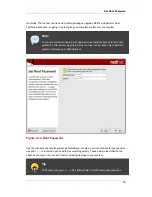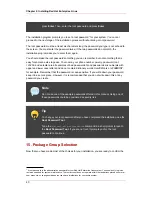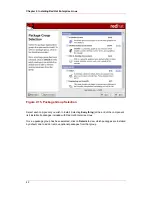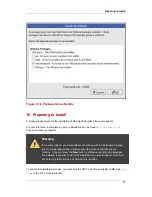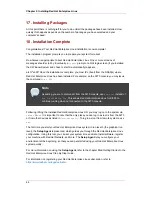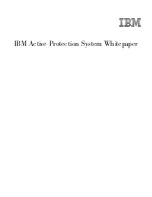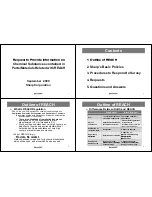
you perform a full installation, choosing all package groups.
Warning
You must create a
/boot/efi/
partition of type VFAT and at least 100 MB in
size as the first primary partition.
Tip
If your hard drive is more than 1024 cylinders (and your system was
manufactured more than two years ago), you may need to create a
/boot/
partition if you want the
/
(root) partition to use all of the remaining space on your
hard drive.
Tip
If you have a RAID card, be aware that some BIOSes do not support booting
from the RAID card. In cases such as these, the
/boot/
partition must be
created on a partition outside of the RAID array, such as on a separate hard
drive.
Unless you have a reason for doing otherwise, we recommend that you create the following
additional partitions:
•
A
/boot/
partition (100 MB) — the partition mounted on
/boot/
contains the operating
system kernel (which allows your system to boot Red Hat Enterprise Linux), along with files
used during the bootstrap process. Due to the limitations of most PC BIOSes, creating a small
partition to hold these files is a good idea. For most users, a 100 MB boot partition is
sufficient.
•
A
root
partition (500 MB - 5.0 GB) — this is where "
/
" (the root directory) is located. In this
setup, all files (except those stored in
/boot
) are on the root partition.
A 500 MB partition allows you to install a minimal installation, while a 5.0 GB root partition lets
you perform a full installation, choosing all package groups.
9.5. Editing Partitions
Editing Partitions
29
Summary of Contents for ENTERPRISE LINUX 3 - FOR IBM S-390 AND IBM ESERVER ZSERIES
Page 2: ...Red Hat Enterprise Linux 4 ...
Page 4: ...Red Hat Enterprise Linux 4 ...
Page 56: ...46 ...
Page 64: ...54 ...
Page 70: ...60 ...
Page 104: ...94 ...
Page 108: ...98 ...

